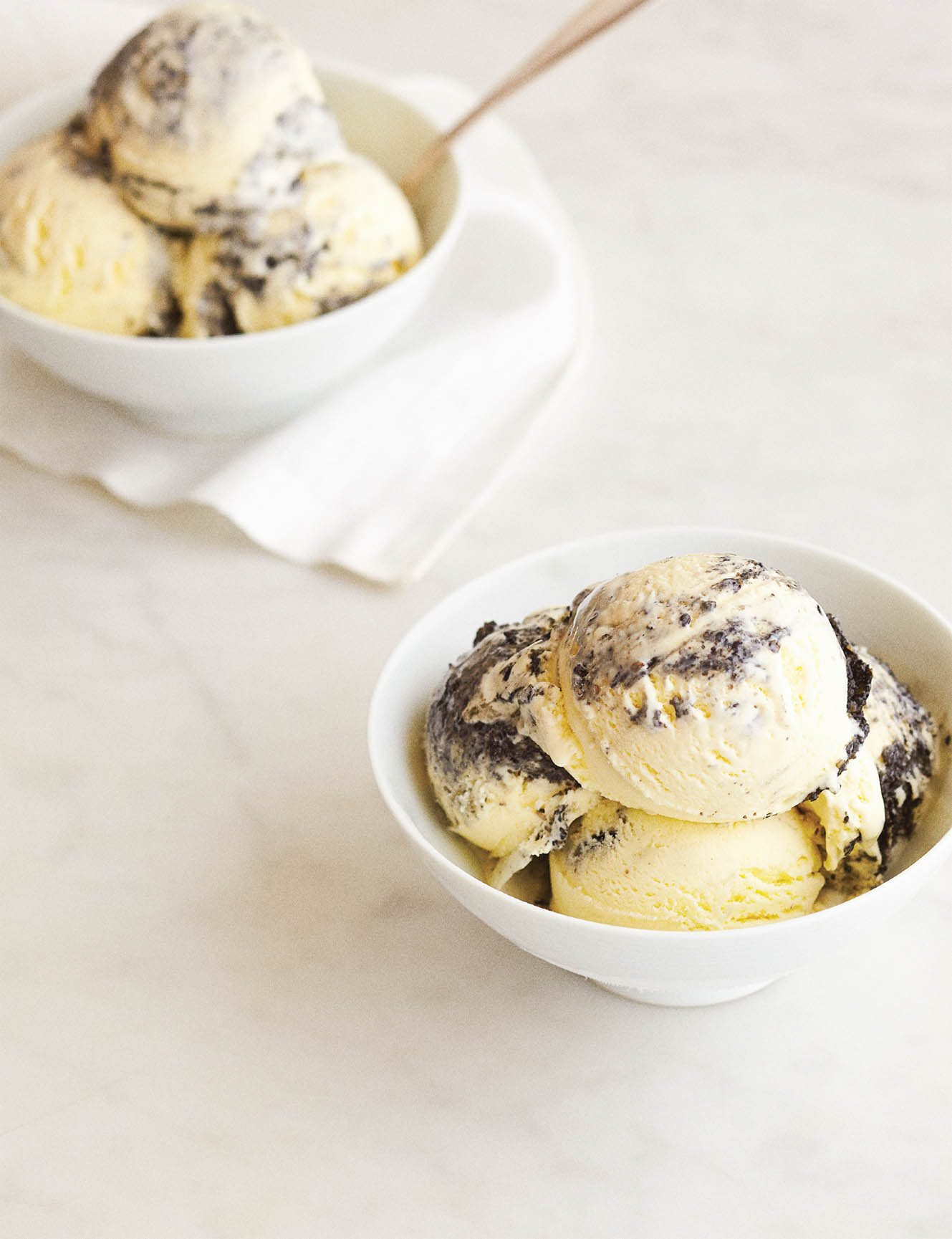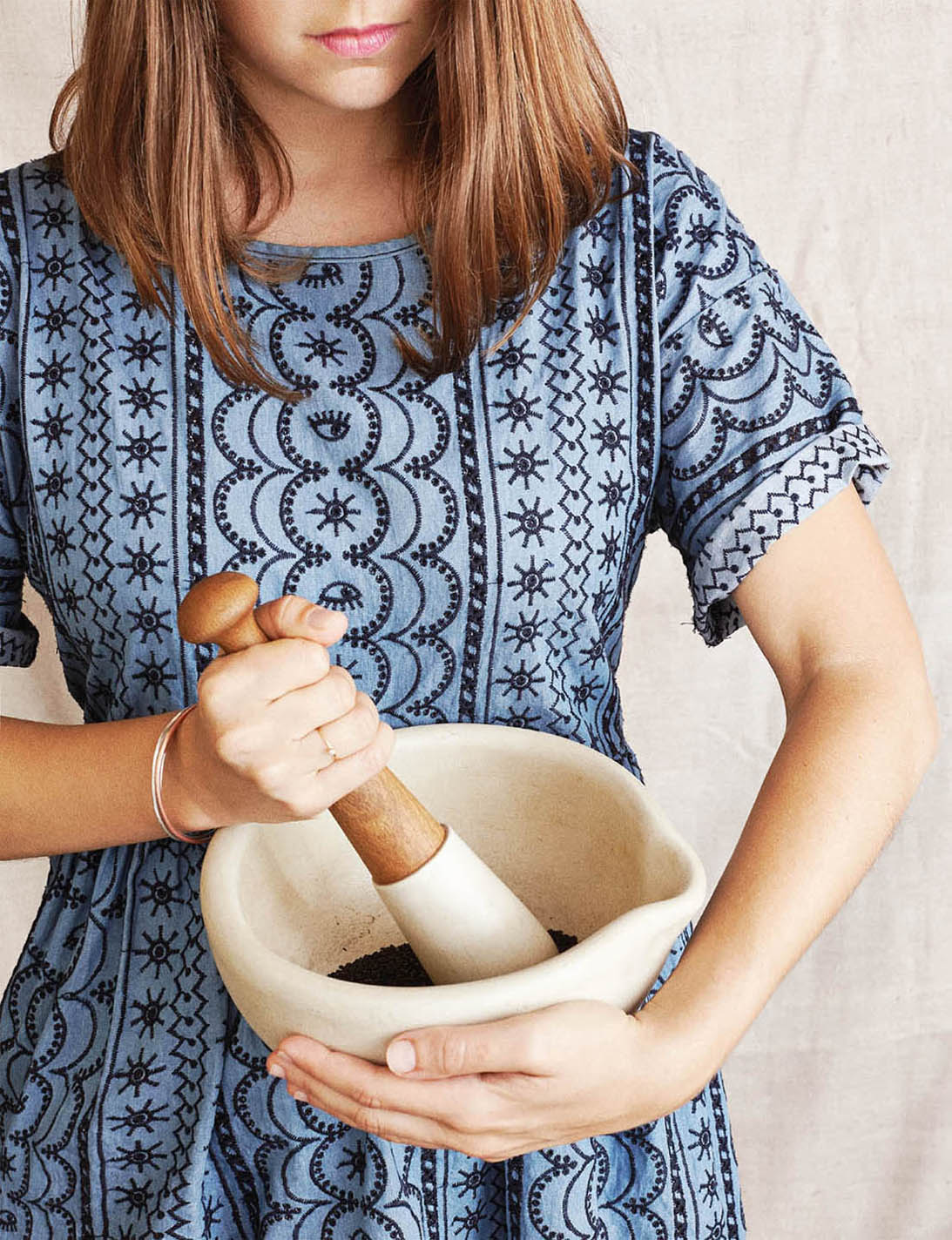BLACK SESAME ICE CREAM

We started making black sesame ice cream after we opened Selamat Pagi, our Balinese restaurant. We were looking to make more Asian flavors, and our Selamat Pagi chef at the time, Sophia Loch, suggested black sesame. It sounded like the perfect way to end a meal. Besides the flavor itself, inky black ice cream makes for a dramatic presentation.
To make this ice cream, we grind sesame seeds with sugar and sesame oil, and incorporate it into ice cream at the very end. While black sesame ice cream echoes Japanese traditions, the flavors perfectly complement Balinese ingredients, and our patrons really love the taste. You can also opt to swirl the sesame paste into the ice cream for a marbled effect—it will look, and taste, beautiful.
MAKES ABOUT 1 QUART
FOR THE BLACK SESAME PASTE
3 tablespoons (21 grams) black sesame seeds
1 tablespoon toasted sesame oil
1 tablespoon (12 grams) sugar
Pinch of kosher salt
FOR THE ICE CREAM BASE
2 cups heavy cream
1 cup whole milk
½ cup plus 2 tablespoons (125 grams) sugar
¼ teaspoon (1 gram) kosher salt
6 large egg yolks
1. To make the black sesame paste, in a dry skillet, toast the sesame seeds over medium-low heat until fragrant, about 2 minutes. Immediately transfer the seeds to a mortar and pestle, and pound them until they form a sticky paste, almost the consistency of grout. Add the sesame oil, sugar, and salt, and incorporate until smooth (see Ben's Note). Set aside.
2. To make the ice cream base, pour the cream and milk into a double boiler or a heatproof bowl set over a saucepan of gently simmering water (the bottom of the bowl should not touch the water). Whisk in ½ cup (100 grams) of the sugar and the salt and stir until they have dissolved. Warm the mixture until you see steam rising from the top.
3. Meanwhile, prepare an ice bath in a large bowl and set another bowl over it. Set aside.
4. In a medium bowl, with a kitchen towel underneath it to prevent slipping, whisk together the egg yolks with the remaining 2 tablespoons (25 grams) sugar until uniform. While whisking, add a splash of the hot dairy mixture to the yolks. Continue to add the dairy mixture, whisking it in bit by bit, until you’ve added about half. Add the yolk mixture to the remaining dairy mixture in the double boiler. Set the heat under the double boiler to medium and cook the custard, stirring continuously with a wooden spoon and reducing the heat to medium-low as necessary, until steam begins to rise from the surface and the custard thickens enough to coat the back of the spoon. Hold the spoon horizontally and run your finger through the custard. If the trail left by your finger stays separated, the custard is ready to be cooled.
5. Strain the custard into the bowl sitting over the prepared ice bath and stir for 3 to 5 minutes, or until the custard has cooled. To get a richly colored, inky black ice cream, stir in the black sesame paste until fully incorporated. (If you’d rather have the ice cream show a black sesame swirl, hold off for now.) If your sesame paste is a bit chunky and you’d prefer a finer texture, transfer the custard to a blender and puree until smooth. Transfer the custard to a quart-size container, cover, and refrigerate for at least 4 hours or, preferably, overnight.
6. Pour the chilled custard into an ice cream maker and freeze according to the manufacturer’s instructions. Place the container in which you refrigerated the custard in the freezer so you can use it to store the finished ice cream. Churn the ice cream until the texture resembles “soft serve.” To give the ice cream a black sesame swirl, rather than having uniformly colored ice cream, add the sesame paste in the last 30 seconds of churning. Transfer the ice cream to the chilled storage container and freeze until hardened to your desired consistency. Alternatively, you can serve it immediately—it will be the consistency of gelato. The ice cream will keep, frozen, for up to 7 days.
ben’s note You can also grind the toasted black sesame seeds with the sesame oil in a food processor. Including kosher salt results in a finer grind, as the abrasiveness of the salt helps wear down the individual sesame seeds.
